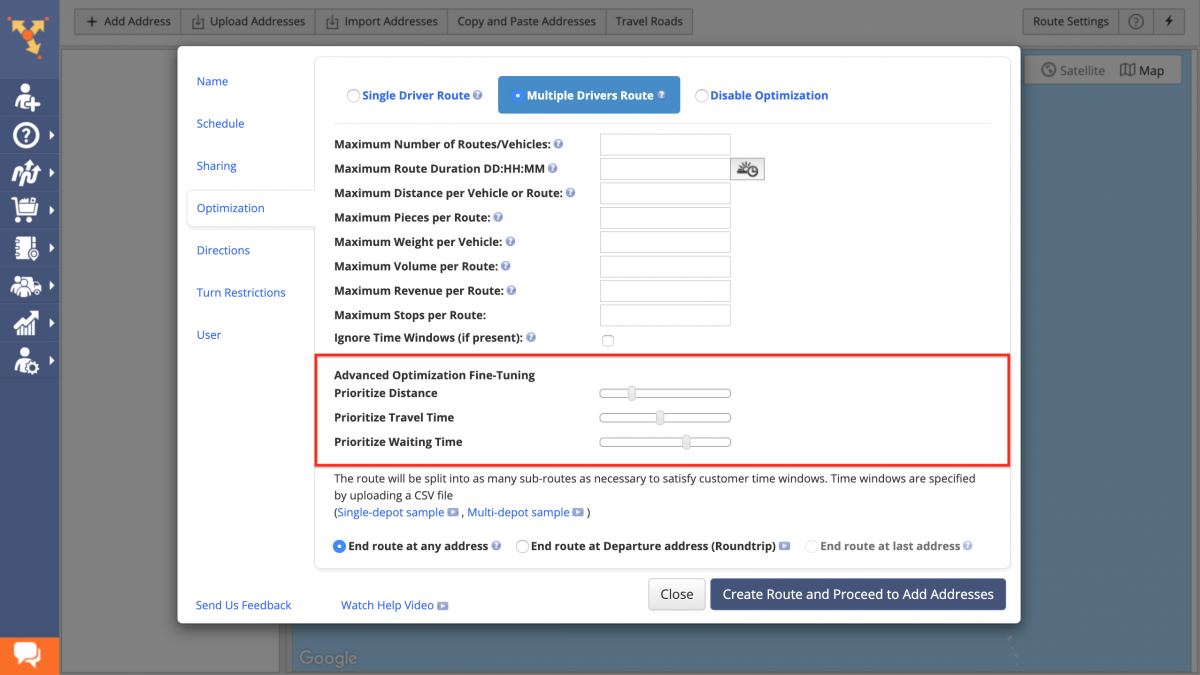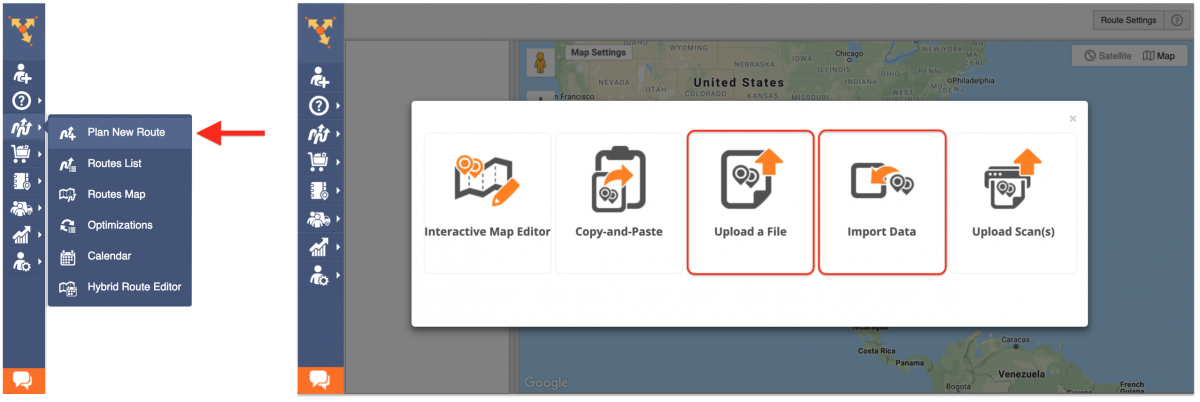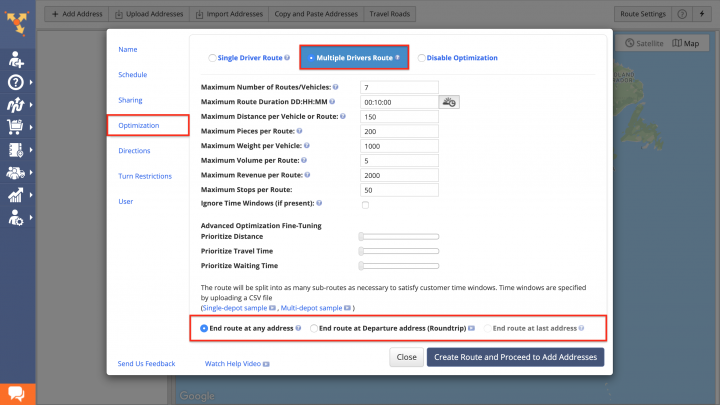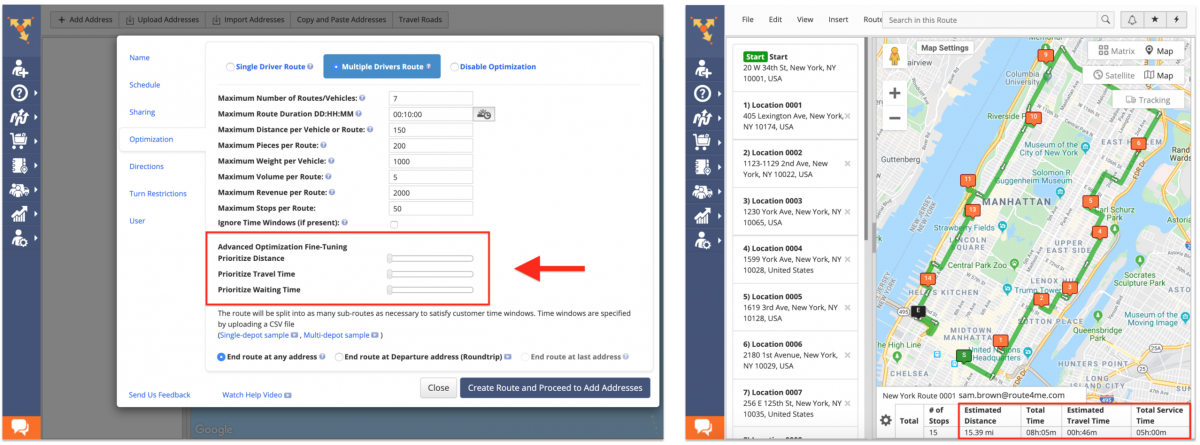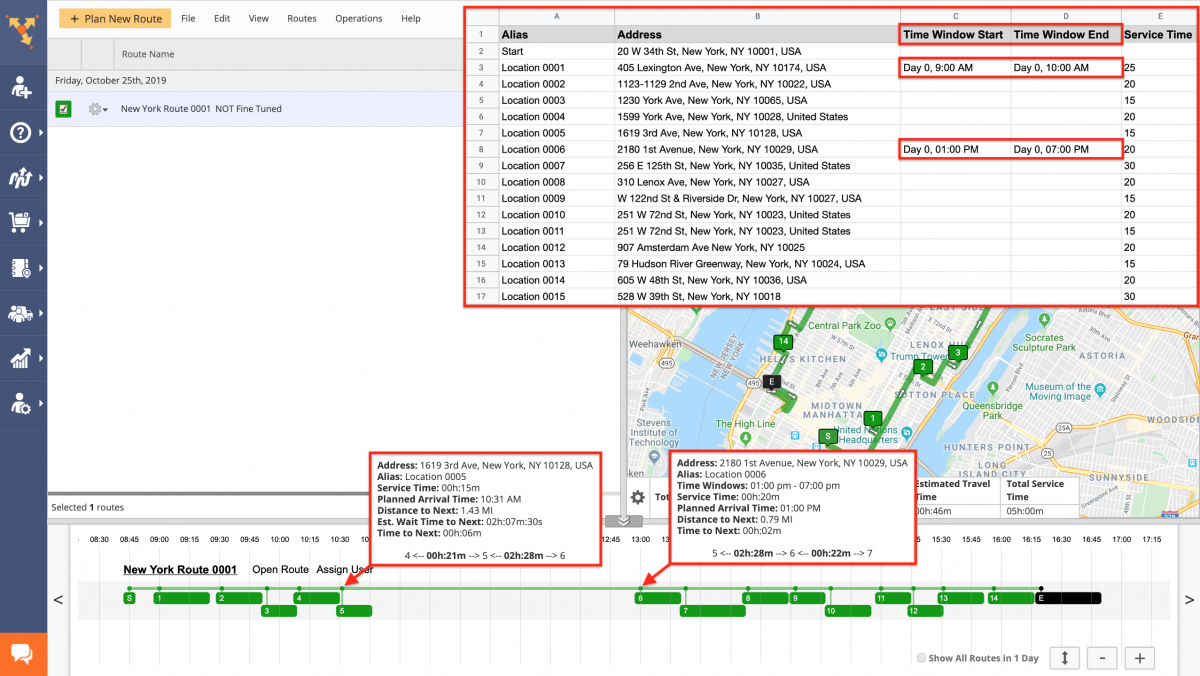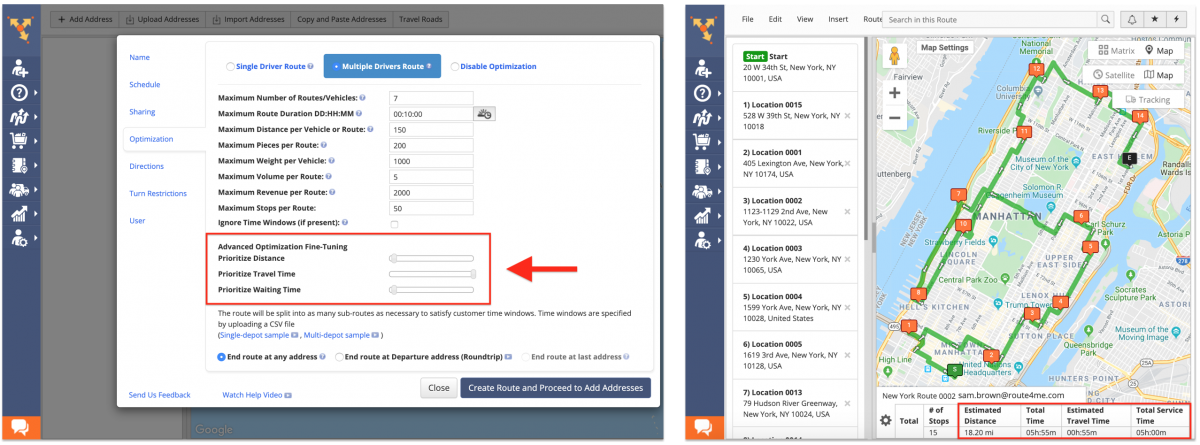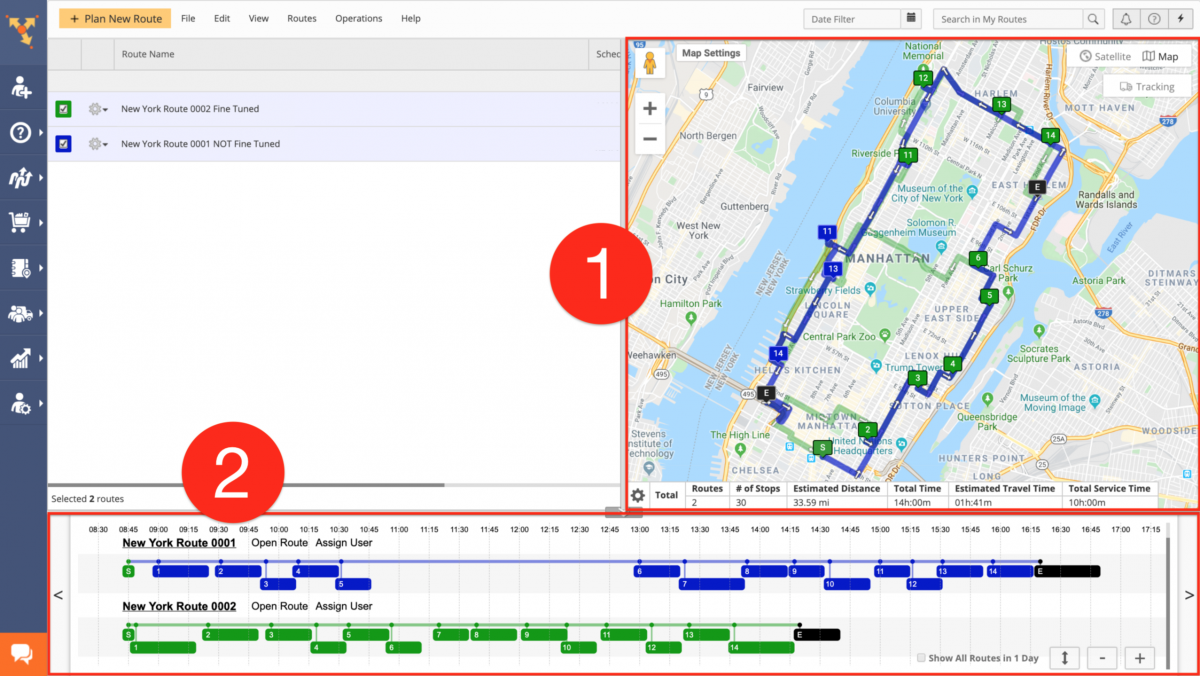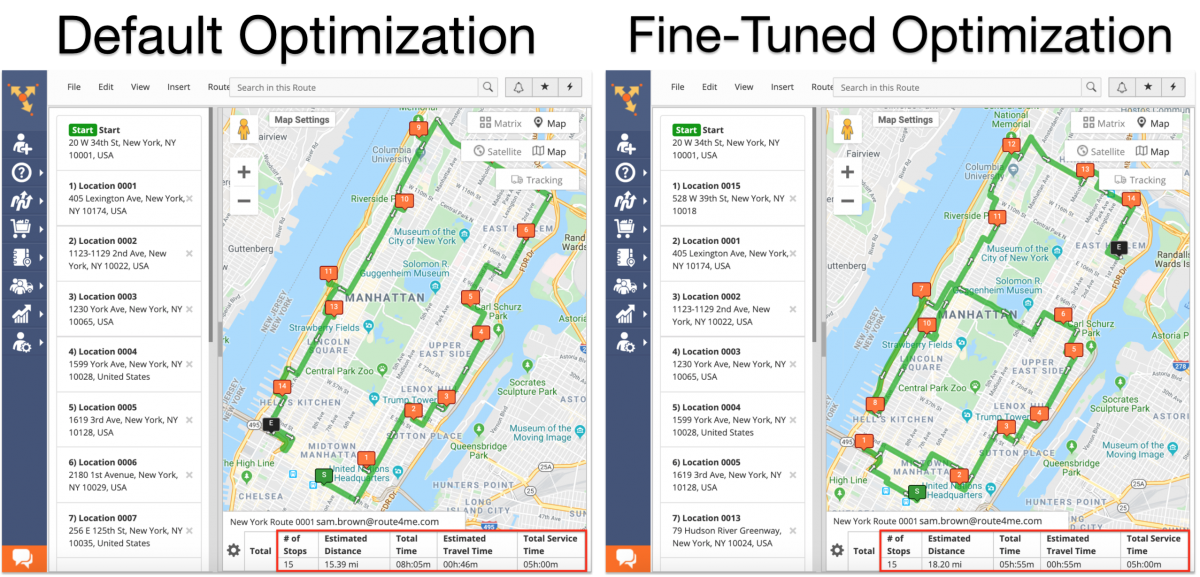Fine Tuning Route Optimization With Time And Distance Priority
Route planning can be complicated, especially when you need to account for multiple parameters and constraints. In addition to accounting for your fleet’s constraints such as cubic volume, weight, number of pieces, etc., you also need to take into account the most optimal distance, travel time, and wait time parameters of your optimizations. Luckily, Route4Me’s proprietary route optimization algorithm can quickly and automatically solve virtually any variations of the most difficult routing problems – such as the Traveling Salesman Problem (TSP) and the Vehicle Route Problem (VRP).
For example, you can create a route that has the shortest possible distance and looks efficient judging by its sequence of stops, but in reality, this route can have wait time gaps in between stops that can extend to hours of idling and inactivity. Route4Me’s Advanced Optimization Fine-Tuning enables you to add extra layers of customization to your optimizations, allowing you to prioritize distance, travel time, or wait time on each route. Moreover, Route4Me’s dynamic routing software permits you to adjust the prioritization percentage of each parameter so that you can create the most balanced optimizations for satisfying the particular needs of your business or unique business model.
To use the Advanced Optimization Fine-Tuning when planning routes, first, go to “Plan New Route” from the navigation menu and then select the preferred route data import method (Upload a File or Import Data).
Next, go to the “Optimization” tab, select the “Multiple Drivers Route” optimization type and then choose where you want the planned route(s) to end.
When you do not use the Advanced Optimization Fine-Tuning, Route4Me uses the default optimization settings and optimizes your routes to have the shortest possible distance. When optimizing for the shortest distance, the route’s total time can be extended due to such factors as the real-life layout of the route’s roads, defined time windows, and so on. For example, highways can be longer by distance but much faster in terms of time due to speed limits, or when you plan routes with time windows that have gaps between visitation times, the route’s wait time/idling time can be extended.
In the example below, there are two stops on the given route that have different time windows with a significant gap between the allowed visitation times. Since the route is optimized for the shortest distance only, the route’s travel and wait times are not taken into account. Thus, even though the optimized route provides the shortest distance, the route’s total time is significantly higher than it could be if it was optimized accounting not only for the shortest distance but also for the most optimal travel and wait times.
The Advanced Optimization Fine-Tuning settings allow you to apply a precise prioritization percentage for distance, travel time, or wait time, providing hundreds of thousands of possible scenarios for planning the most optimal routes that satisfy your unique requirements. To fine-tune the optimization, use the corresponding toggles for adjusting the preferred prioritization of distance, travel time, and wait time.
By re-optimizing and fine-tuning the route that was first optimized for the shortest distance only, you can get more balanced results:
- On the Routes Map, you can compare both routes one next to another and see that even though both routes have the same addresses, each route has a different sequence of stops;
- In the timeline, you can see that the route “0001” which was optimized for the shortest distance has a significantly more extended total travel time than the route “0002” which was fine-tuned to have a balance between the shortest distance, travel time, and wait time.
As a result, on the one hand, the route that was optimized for the shortest distance only turned out to be 2.81 miles shorter than the fine-tuned route. On the other hand, the route that was fine-tuned to have a balance between distance and time turned out to be 02:10 hours shorter than the route with the default distance optimization. Thus, the price of your driver and fleet vehicle idling for 2+ hours would result in significantly higher expenses than just driving for extra 2.81 miles.
| Parameter | Default Optimization | Fine-Tuned Optimization | Difference |
|---|---|---|---|
| Estimated Total Distance | 15.39 mi | 18.20 mi | 2.81 mi |
| Estimated Total Time [HH:MM] | 08:05 | 05: 55 | 02:10 |
Visit Route4Me's Marketplace to Check out Associated Modules:
- Operations
Advanced Team Management Add-On
- Operations
Custom Data Add-On
